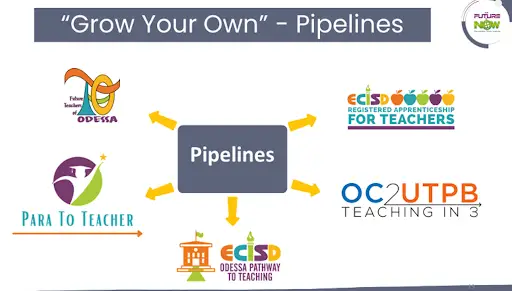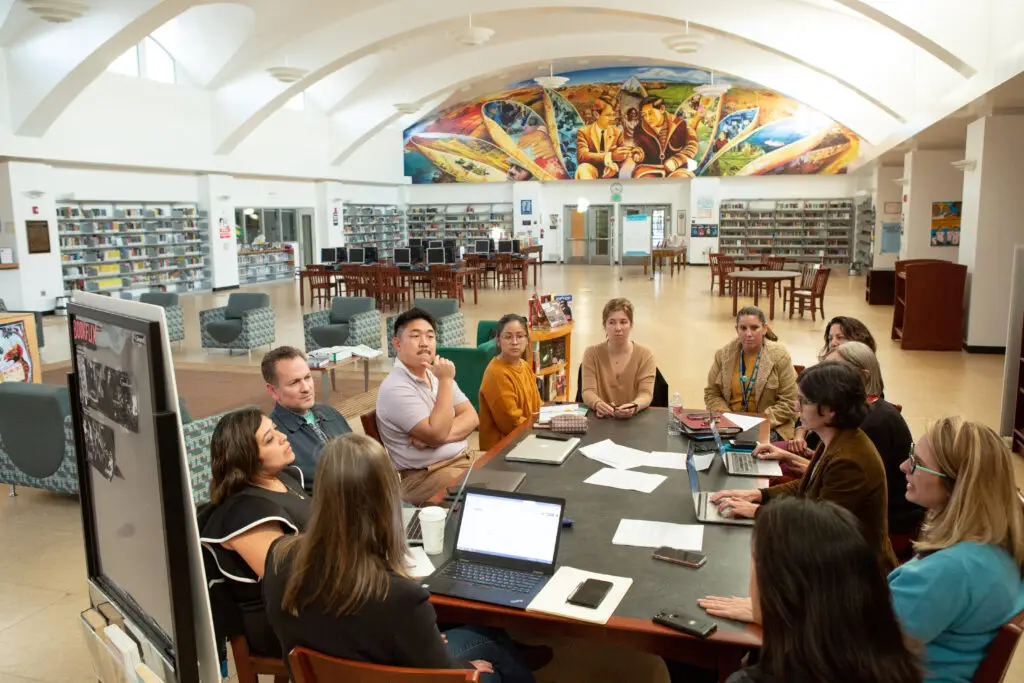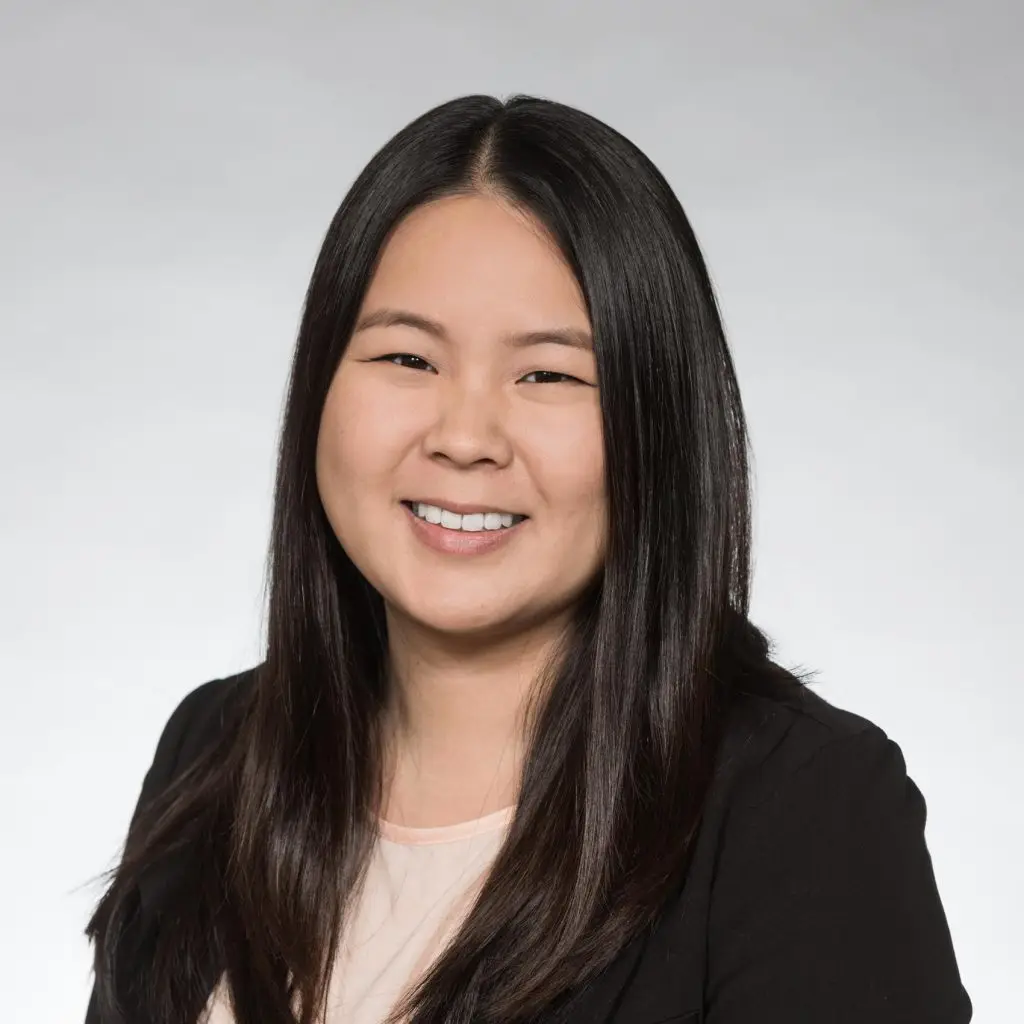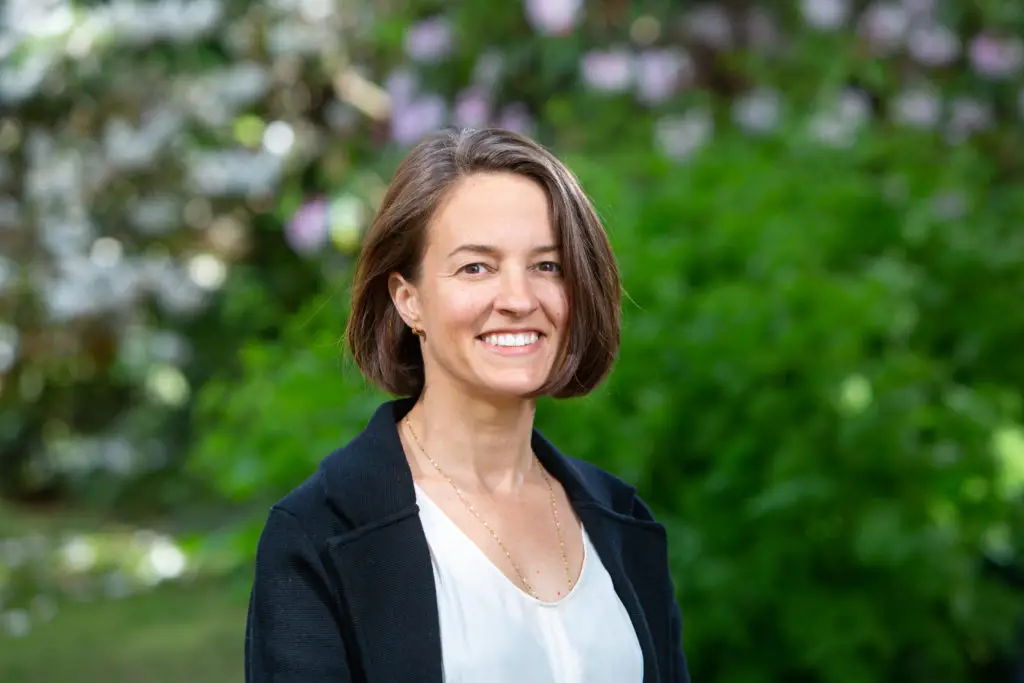This blog is part of a three-part series on school systems that have been implementing workforce innovations or strategic staffing solutions for several years.
The teacher workforce faces a host of post-pandemic challenges, including exacerbated staffing shortages and high levels of burnout. However, one educational leader noted, “Everyone wants single-thread solutions within single verticals… You can’t have a solution to teacher diversity that doesn’t take into account community engagement, shifting the culture of schools themselves, classroom coaching for teachers around cultural competence, and … training around culturally competent curriculum.”
Those “single-thread solutions” might include using federal COVID recovery funds to pay for hiring bonuses or partnering with local teacher preparation programs to recruit more teacher candidates. But some leaders are trying to transform their teacher workforce by adopting multiple, coordinated strategies across traditional central office verticals or silos. We call this approach strategy braiding.
Ector County Independent School District (ECISD) is braiding multiple strategies to address their teacher workforce’s specific challenges. ECISD created a set of reinforcing structures that have led to lower vacancies, more peer learning and collaboration, and better retention of educators (based on state and district data).
The problem
Located in West Texas, ECISD is among the thirty largest school districts in the state. In the 2021-22 school year, it served 31,810 students and employed 1,822 full-time teachers and 1,803 other staff, including instructional aides and administrators. The district’s location alone makes staffing difficult—the nearest large city, Lubbock, is two hours away—but they face additional local labor market challenges: competition from neighboring districts and losing staff to higher-paying jobs in the local oil industry. Previously, finding enough teachers was ECISD’s top concern. As one district leader described, “Because of COVID and [staffing] vacancies, we needed all hands on deck. … We weren’t being as picky” about hiring experienced and highly qualified teachers. Today, ECISD no longer faces vacancy challenges and currently has a 98% self-reported fill rate for teachers, thanks in part to their multiple strategies to recruit, grow, and retain staff.
The strategies
The district uses several strategies to 1) recruit and grow more/new teachers and 2) retain and develop those already on the job. The goal, one district leader told us, is to “continue to grow those that we have here, whether it be from the paraprofessional or even the teacher resident level when they’re finishing college, going into their first year of teaching paraprofessionals, developing them into teachers.”
On the recruitment side, the district is cultivating talent pipelines among local college students and current staff who are pursuing a teaching career and/or credential*:
- Grow-Your-Own programs: ECISD partners with Odessa College and the University of Texas Permian Basin for Teaching in 3, an accelerated pathway that allows college students to complete their undergraduate courses in three years and dedicate their final year to a teacher residency program. Teacher residents at ECISD are placed in a school and matched with a highly effective multi-classroom leader from Opportunity Culture, with a full-year paid residency. The school’s principal may retain them the following year as regular classroom teachers.** Additionally, ECISD offers its Registered Teacher Apprentice Program, a paraprofessional-to-teacher program, and partners with the Department of Labor to help remove barriers for current employees who pursue a teaching certification.
- Educator preparation program: ECISD is one of three Texas districts offering an educator preparation program. Since the district holds a District of Innovation status, the Odessa Pathway to Teaching (OPT) program allows participants to teach while attending classes to obtain their certification. Participants also participate in monthly coaching sessions with a dedicated field supervisor.

ECISD also offers personalized professional learning and incorporates strategic staffing and compensation through three initiatives to develop current staff and retain high-quality teachers:
- Teacher leadership positions: ECISD participates in Opportunity Culture, Public Impact’s capacity-building program for current teachers to become multi-classroom leaders (MCL) without leaving the classroom. MCLs lead their teams of teachers, paraprofessionals, and teacher residents by providing classroom support, collaboration, and professional development.
- Job-embedded, personalized professional learning: For schools not participating in Opportunity Culture, ECISD provides instructional coaches who also receive professional development. This program is part of the district’s larger distributed leadership model, which offers teachers immediate support from on-campus staff members. The district maintains an organizational chart that outlines the support structure, clarifying roles and responsibilities. While the Department of Talent Development plays a significant role, this model ensures staff receive support in areas beyond the department’s reach.
- Traditional professional learning: While the bulk of the district’s professional learning comes through the distributed leadership model, ECISD also coordinates and communicates professional learning opportunities to staff. This includes hosting classroom management sessions and training teachers on curriculum and learning strategies.
The power of braiding
By braiding multiple recruitment and development strategies, ECISD shows how moving across silos to adopt complementary strategies can help to address multifaceted problems—and ultimately benefits the system and the teachers. For example, combining the MCLs from the Opportunity Culture program with the Teaching in 3 program’s teacher residents builds the MCLs’ coaching skills, while residents receive mentorship from highly effective teachers. In the words of one leader, “We’re working on building capacity and training our [coaches and MCLs] so that they are better equipped to support the teachers that they’re assigned to. The goal is for everyone to have support and for everyone to coach.”
Similarly, braiding multiple professional learning approaches gets teachers the support they need faster. “We’re trying to streamline so that when teachers need help, they’re getting the help they need sooner than later,” in the words of one leader. When MCLs and instructional coaches are equipped to provide personalized, job-embedded support, “that’s where true change is going to happen.”
While braiding strategies is a promising approach to address multifaceted problems, it does present unique challenges, including:
- Implementation: Can systems implement this many strategies well? As systems introduce or change strategies over time, how can systems ensure staff members buy in?
- Effectiveness: Does braiding strategies solve systems’ multifaceted workforce challenges? How, if at all, do each of the strategies improve the learning experiences for students?
- Sustainability: Most systems have paid for these strategies using federal recovery funds (ESSER) and various state-level and foundation funds, but going forward, how can systems work to make them self-sustainable?
- Technical assistance: Most providers tend to support specific—not braided—strategies. Where can system leaders find assistance as they continue to implement multiple strategies?
*Several of these programs are possible because ECISD currently holds the District of Innovation status, which supports several initiatives by allowing the district to hire teachers who have a bachelor’s degree but are not yet certified—with the understanding that these teachers will participate in one of ECISD’s grow-your-own programs.
**The district is also working with the National Center for Grow-Your-Own to become a registered apprenticeship site, allowing the team to tap into Department of Labor funds and allocate them towards its existing pipeline programs.






